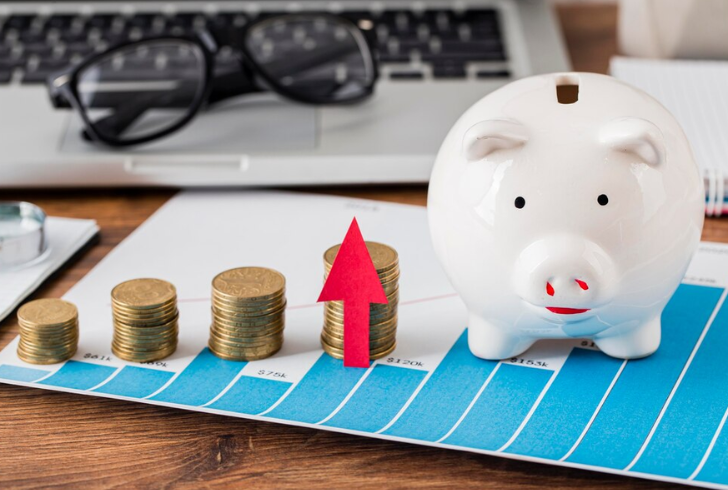
What Is a High-Yield Account and How Does It Work?

In today’s financial landscape, savvy savers are turning to high-yield accounts as a powerful tool to grow their money. These accounts offer significantly higher interest rates compared to traditional savings options, making them an attractive choice for those looking to maximize their returns. But what exactly are high-yield account, and how can they benefit you?
Let’s dive into the world of high-yield savings and explore why they’re becoming increasingly popular among smart money managers.
Understanding High-Yield Accounts
High-yield accounts are savings vehicles that typically offer interest rates far above the national average. While a standard savings account might offer a paltry 0.46% Annual Percentage Yield (APY), a high-yield account can provide returns up to 15 times higher. This substantial difference can translate into significant earnings over time, especially for larger balances.
Key Features of High-Yield Accounts:
- Higher interest rates than traditional savings accounts
- FDIC or NCUA insurance up to $250,000
- Variable interest rates that can change over time
- Easy electronic transfers between accounts
- Potential for fewer additional banking services
The Advantages of Choosing a High-Yield Account

Freepik | High-yield accounts offer higher interest rates than regular savings accounts.
1. Higher Interest Rates – These accounts typically offer interest rates that are much higher than traditional savings accounts, allowing your money to grow faster.
2. Online Accessibility – Many high-yield accounts are offered by online banks, which tend to have lower overhead costs and can pass those savings on to customers through better rates.
3. FDIC Insured – Like traditional savings accounts, high-yield accounts are insured by the Federal Deposit Insurance Corporation (FDIC), so your deposits are protected up to $250,000.
Navigating the High-Yield Account Landscape
Online Banks
Many of the most competitive high-yield account rates are found at online banks. These institutions can offer higher rates due to lower overhead costs compared to traditional brick-and-mortar banks. While this might mean sacrificing face-to-face interactions, the trade-off in earning potential can be substantial.
Comparing Your Options
When shopping for a high-yield account, consider these factors:
- Interest rates (current and historical)
- Minimum balance requirements
- Initial deposit requirements
- Fee structures
- Electronic transfer capabilities
- Mobile banking features
- Customer service quality
Maximizing Your High-Yield Account
Strategic Uses for Your High-Yield Account
- Emergency Fund – Keep 3-6 months of living expenses readily available.
- Savings Goals – Whether it’s a dream vacation or a down payment on a house, watch your targeted savings grow faster.
- Overflow Cash Management – Move excess funds from your checking account to earn more interest.
Balancing Act
While high-yield accounts offer attractive returns, they shouldn’t be your only savings or investment strategy. Consider them as part of a diversified financial plan that might include:
- Retirement accounts (401(k)s, IRAs)
- Investment portfolios (stocks, bonds, mutual funds)
- Real estate investments
- Traditional savings accounts for everyday use
What to Watch For

Freepik | If you choose an online bank for a high-yield account, consider your deposit options.
1. Variable Rates
Remember, the interest rates on high-yield accounts can fluctuate. They often move in tandem with the Federal Reserve’s actions. While rates are attractive now, they could decrease (or increase) in the future.
2. Withdrawal Limitations
Some institutions may impose limits on the number of withdrawals you can make per month. Be sure to understand these restrictions before opening an account.
3. Online-Only Considerations
If you choose an online bank for your high-yield account, consider how you’ll deposit funds. Many offer mobile check deposit and electronic transfers, but if you frequently deal with cash, an online-only bank might not be the best fit.
How to Open a High-Yield Account
Opening a high-yield account is often a straightforward process. Many online banks offer a fully digital application process that allows you to open an account from the comfort of your home. Make sure you have the necessary personal information, such as your driver’s license, Social Security number, and details of your primary checking account to fund the initial deposit.
For those already banking with a particular institution, opening a high-yield account can be even easier, as you won’t need to go through a full verification process again.
Elevating Your Savings Game
High-yield accounts offer a compelling opportunity to make your money work harder for you. By taking advantage of these higher interest rates, you can accelerate your savings goals while maintaining the safety and liquidity you need. As with any financial decision, it’s essential to consider your individual needs and goals. A high-yield account could be the perfect addition to your financial toolkit, helping you build a more secure and prosperous future.
Remember, the key to financial success isn’t just about earning more—it’s about making smart choices with what you earn. A high-yield account is one such choice that can pay dividends in your journey toward financial well-being.
More inTrade & Markets
-
How to Make Money on TikTok – 8 Proven Strategies
TikTok isn’t just a platform for viral dance challenges and funny skits anymore. It’s a goldmine of opportunity for creative minds...
June 6, 2024 -
Tech Giant Cisco Likely to Lay Off ‘Almost 350’ Employees As Part of Its ‘Restructuring Plan’
Is your favorite tech company feeling the pinch? Recent reports suggest that Cisco (CSCO) is planning to lay off ‘almost 350...
May 31, 2024 -
How Many Mortgages Can You Have? Understanding the Limits
Are you pondering the idea of delving into the realm of multiple mortgages? Whether it’s for expanding your property portfolio, securing...
May 23, 2024 -
What You Ought to Know About Dominican Republic Rum
When you think of the Dominican Republic, your mind might drift to images of beautiful beaches and vibrant dance rhythms. But...
May 16, 2024 -
Are Mobile Homes Worth Investing? A Deeper Look
Are mobile homes a good investment? This question often pops up among potential homeowners and investors alike, looking for an affordable...
May 9, 2024 -
10 Best Stocks to Invest in 2024 for Smart Investors
In a world where economic growth seems to be hitting the brakes, the hunt for the best stocks to invest in...
April 30, 2024 -
Will Breaking a Lease Affect Your Credit? The Real Impact
Breaking a lease isn’t just about packing up and moving on; it’s a decision that can have lasting financial implications. While...
April 23, 2024 -
Is Traveling a Hobby? Exploring the Reasons and Ways to Travel More
Have you ever scrolled through social media and stumbled upon the question, “Is traveling a hobby?” It’s a thought-provoking query that...
April 16, 2024 -
Who Owns the Playboy Mansion? Revealing the Current Owner
The story of the Playboy Mansion is as intriguing as the parties it once hosted. Nestled in the heart of Los...
April 9, 2024















You must be logged in to post a comment Login